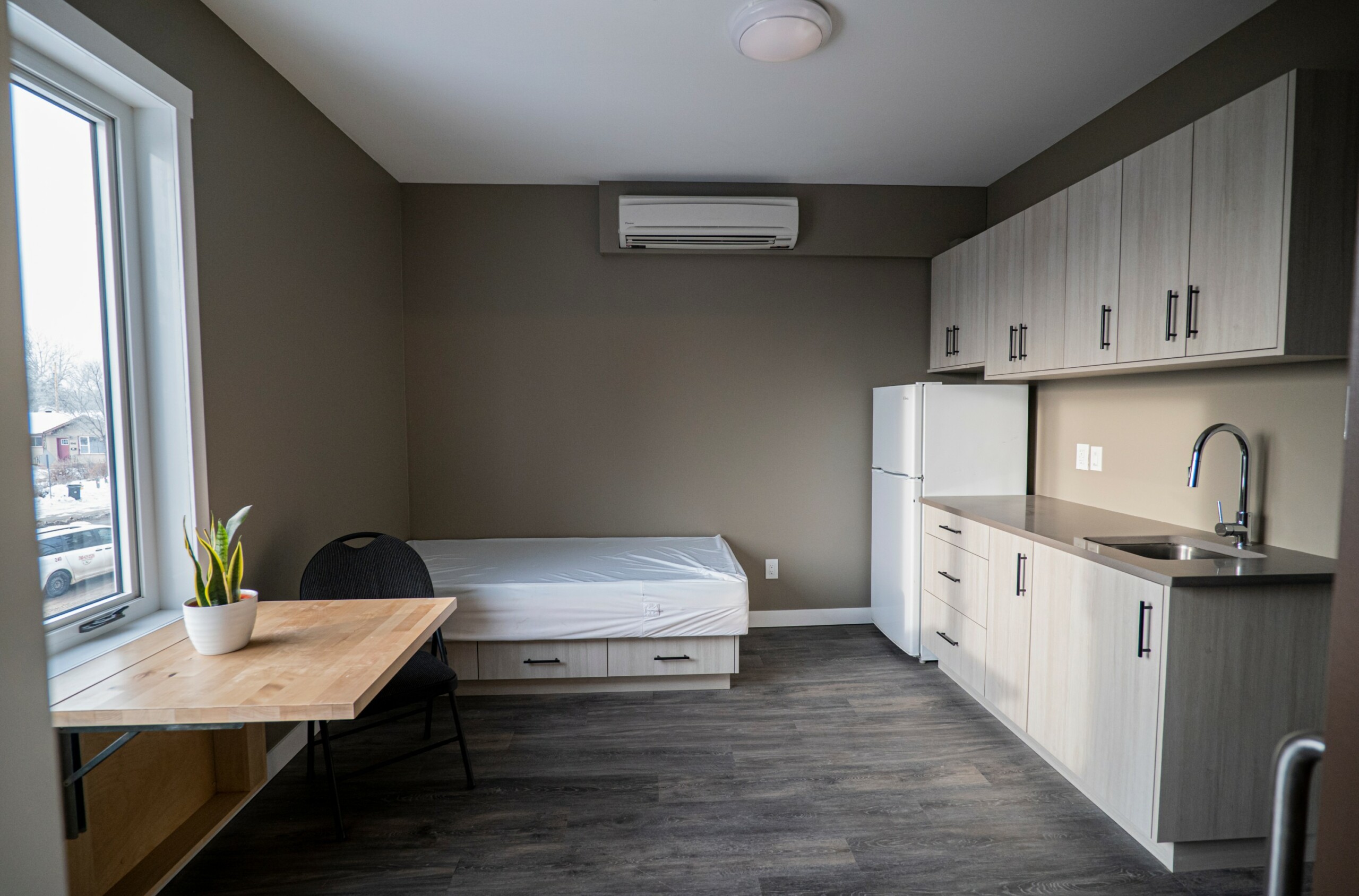Program offers houseless emergency department patients a bridge to home

Photo by University of Alberta
Edmonton emergency department patients who lack housing will soon get a chance to find permanent homes following their hospital stay, thanks to a new transition housing program.
“No one should leave emergency without a place to go and a roof over their head,” says Louis Hugo Francescutti, professor in the School of Public Health, ER physician and lead on the Bridge Healing Transitional Accommodation Program, also known as Asamina Kochi, which means “to try again” in Cree.
People experiencing houselessness make more than 26,000 visits to Alberta emergency departments each year, according to Francescutti. Those patients are treated for medical issues ranging from diabetes complications to overdoses to wound care, but are then discharged back to the street or a homeless shelter without having their underlying needs addressed. Many wind up returning to hospital repeatedly.
The new program, funded by Alberta Health Services, aims to break that cycle. Before discharge from any Edmonton hospital emergency department, eligible patients will be offered temporary housing at a new building in the Glenwood neighbourhood run by Jasper Place Wellness Centre. People can stay for up to 30 days, access wraparound services like food security, mental health and employment counselling, and connect to permanent supportive housing.
“It’s going to improve the lives of these individuals, and it has the potential to save the health-care system money,” Francescutti says.
The program will be delivered for $80 a day, compared with costs of up to $1,000 a day to care for a patient in hospital, Francescutti notes.
“I actually don’t know of any other program that’s ever existed to solve this need,” says Taylor Soroka, vice-president of strategy and engagement for the Jasper Place Wellness Centre, which offers housing, medical care, food security programs and employment to people in west Edmonton.
“This program is specifically for individuals who are heavy users of the emergency department that are often not using other community services, so it’s about opening that door and diverting them back into the community through housing.”
A broad community partnership of post-secondary students, volunteers, health-care and housing staff, government and private donors came together to make the bridge healing plan a reality. The idea was born in a graduate student classroom at the University of Alberta four years ago. At first the focus was on building tiny homes, but that was eventually rejected as being too expensive and isolating. Instead they chose to focus on offering temporary shelter and intensive programming as a stepping stone to permanent housing.
The plan has since received endorsements from the Alberta Medical Association’s section of emergency medicine and the Edmonton Police Service. The City of Edmonton approved $290,000 in May. Other supporters include Lions Club International, Edmonton Oilers Community Foundation, University Hospital Foundation and Royal Alexandra Hospital Foundation and many private donors. Students from the Northern Alberta Institute of Technology developed a marketing plan for Asamina Kochi and an app for use by emergency department staff to book rooms for their patients.
The donated time of volunteers has also been key, worth an estimated $350,000 so far, Francescutti estimates. Joan McCollum, a retired project manager, has personally spent 600 hours on the project. McCollum says she hopes to see the Asamina Kochi model eventually adopted across the province.
“This model is scalable to any community, any location, any place in the world, really,” McCollum says. “We’ll be gathering data to determine the effectiveness of the program and areas that can be improved, but we feel very confident that this is going to succeed because we’ve had such strong support from the community and from the volunteers.
“It’s going to blossom into something much, much bigger.”
Twelve of the 36 new transition beds will be available to clients by the end of January 2023, according to AHS. The three 12-room net-zero buildings have self-contained, wheelchair-accessible suites, each with its own fridge, induction cooktop, shower, toilet and a Murphy bed. The facilities will operate using the Eden Alternative philosophy of care, which allows clients to support each other.
Francescutti says a visit to the emergency department is often a sign that someone living rough is ready to make a change in their life.
“When someone who’s experiencing homelessness ends up in the emergency department, that’s a crisis, because they’ve had to leave whatever limited possessions they have somewhere, they’ve had to cross the security guards and go through the triage process and wait. That’s when they’re reaching out, telling us, ‘I really need help.’ So that’s where we have to meet them,” he says.
Each person’s program will be tailored to their individual needs. Francescutti, who recently co-edited a special issue of the International Journal of Environmental Research and Public Health on homelessness and public health, hopes some clients may end up using their street skills to help others navigate through the system.
“What we’re really trying to achieve is that everybody who comes through this program has a sense of self-esteem and dignity, that they’re being served in a way that they feel respected, that they have a sense of belonging and that they’re able to contribute to society in a meaningful way,” says McCollum.
Francescutti says this is just the kind of community partnership the university should be leading.
“There’s enough brainpower and ingenuity and wherewithal within a university environment, from undergrads, grads, professors and staff, that the Government of Alberta should be asking on a regular basis for universities to solve complex societal problems like this one.”
